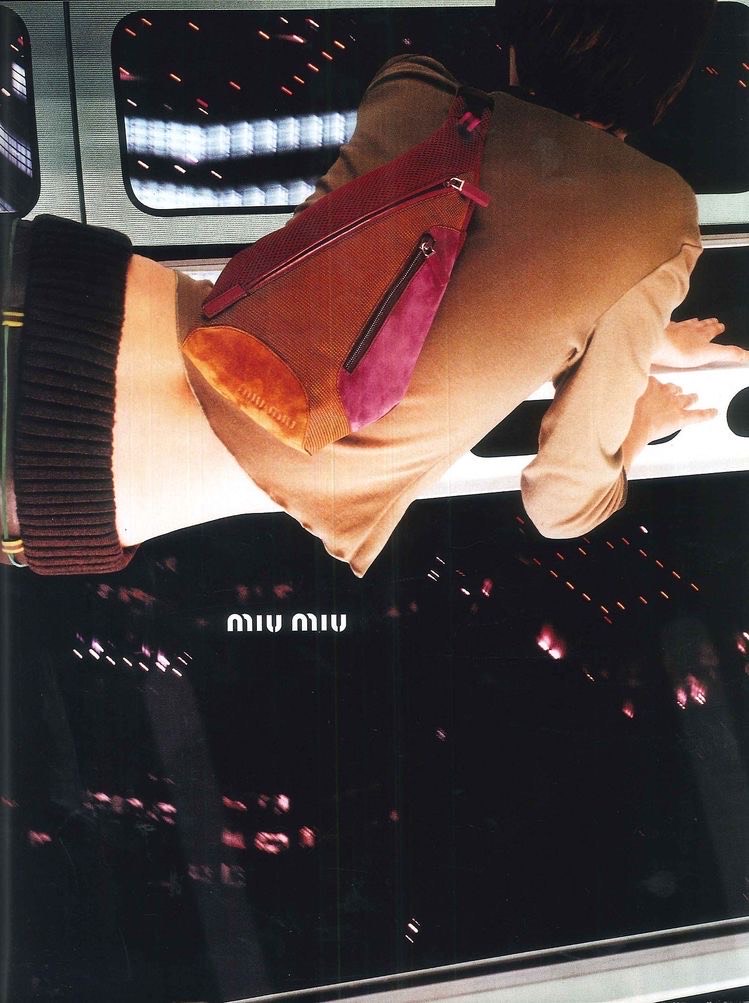The year was 1999; a turning point in pop culture for many reasons. It was the bolded year where society as a whole said goodbye to the millennium: the age of the internet was upon us, and so began the much-maligned, and now glorified kitsch of Y2K. After the 20th century, a certain cultural reverence for the pared-back sophistication of high fashion was paused, giving way to streetwear brands that were not only more affordable but in synch with the pop cultural trends of that time. But not before the demure sophistication of Miu Miu’s FW99′ collection.
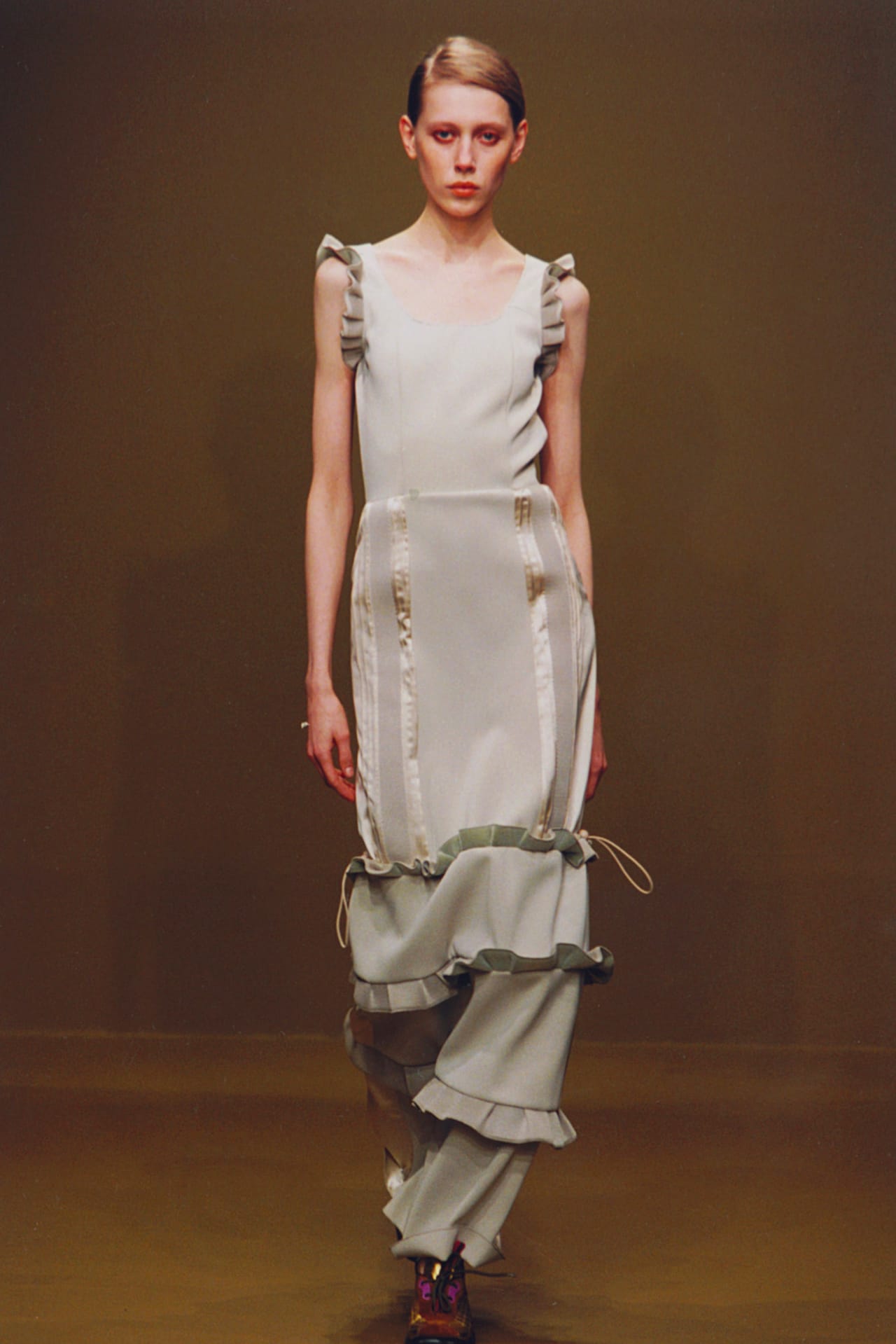
Lo and behold, through all of the temporary trends and phases of the digital age — from hot pink tank tops to velour sweatpants, from alien embroidered dad caps, back to toddler tees, into the age of barbie, cottage, and ballet-core hitting TikTok feeds; there has been one collection that’s risen above the provisional tides of both street and designer. Miu Miu Fw99 was the turning point for fashion and the possibilities of what clothes could be.
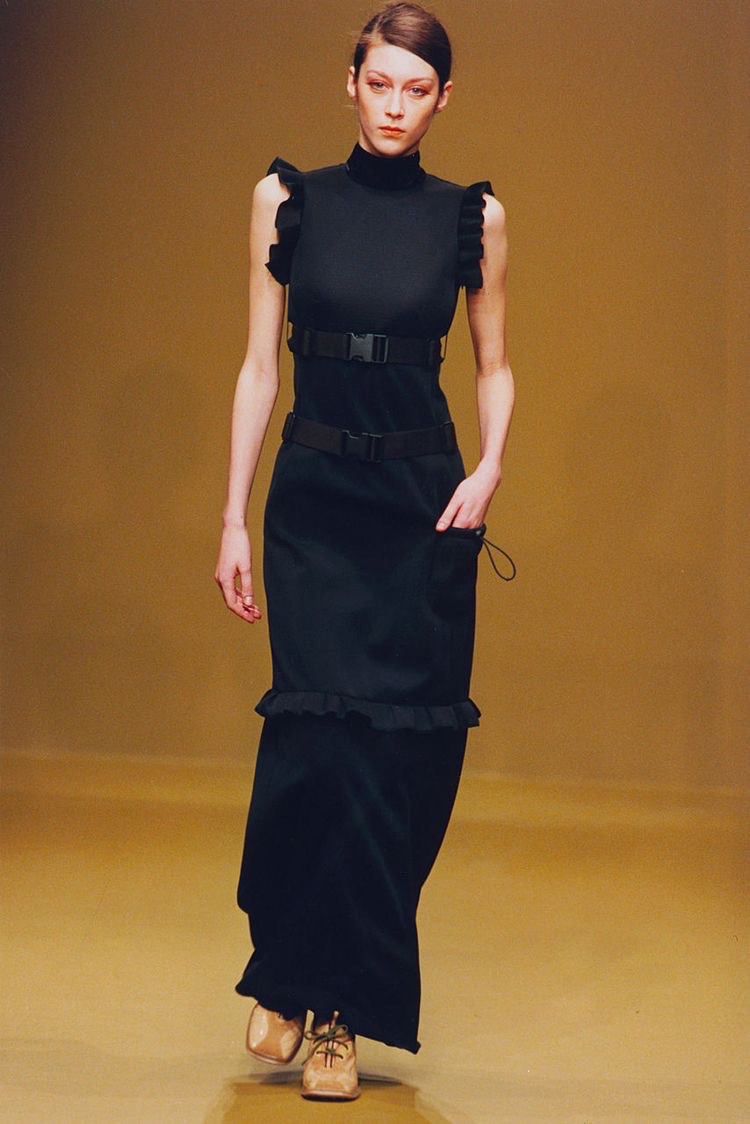
The collection, revered for its utility and simplicity, was decidedly pragmatic. Every garment was distinctly different. A skirt was supposed to be a skirt, and a pair of heels was supposed to be a pair of heels. Yet, Miu Miu blended ideas, blended geometric shapes, and in turn created a new kind of vision. A vision that has left consumers stalking every vintage website for the potential to find a pair of the collections. signature “bubble sole” Miu Miu shoes.
Miu Miu set itself apart from other couture designers of the time, largely because the 90s were filled with seasonal runway shows portraying the avant-garde and the camp. To set apart designers from the laid-back streetwear also happening during this era, high-fashion brands were creating looks that were whimsical, dramatic, and which dared to dream in colour. Much of Miu Miu’s runway efforts prior to 1999 were in keeping with the aesthetic. Take the prior season, for example, replete with light and dainty pastels and the flowy slinky dresses that were emblematic of the 90s.
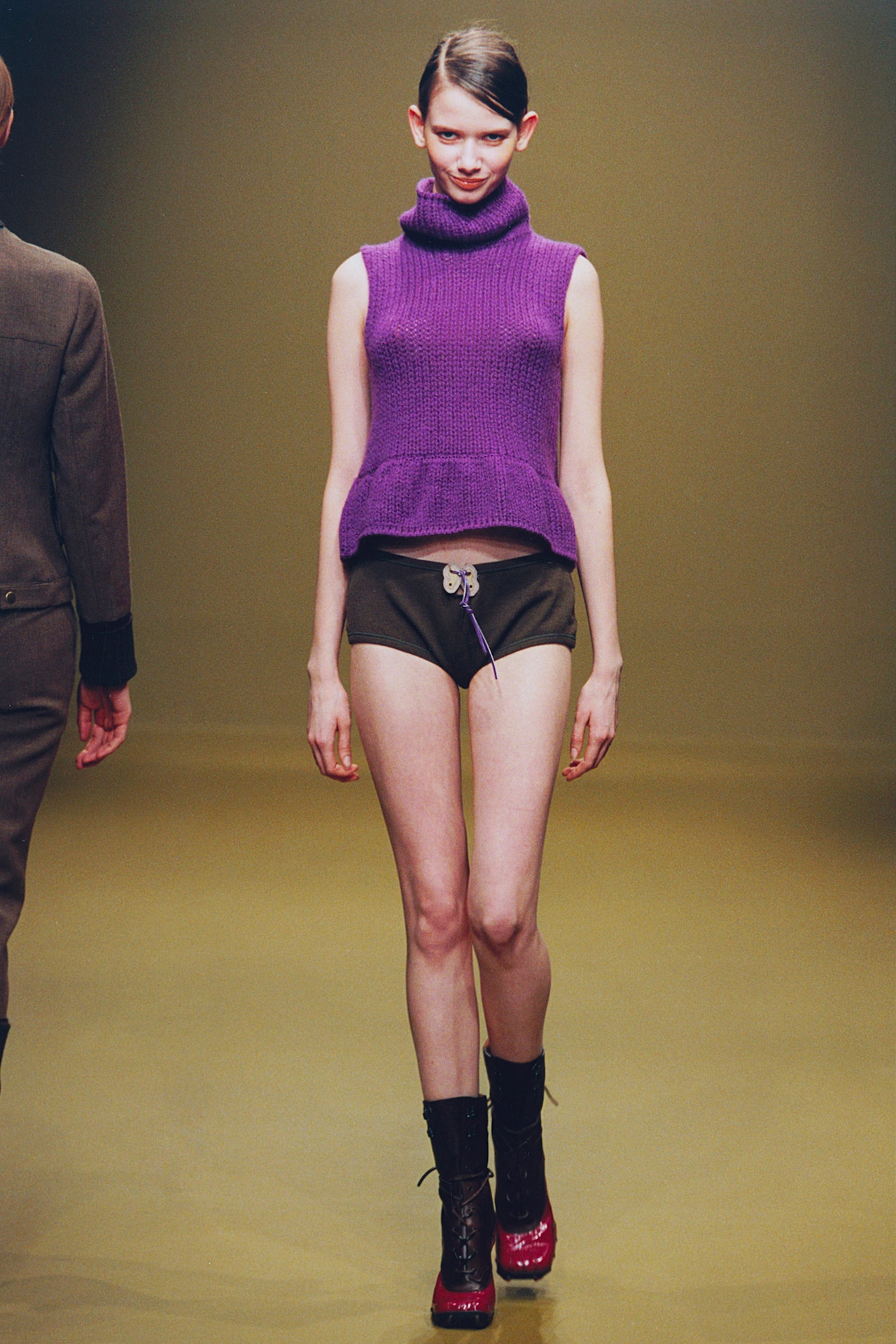
During ’99, Versace, Jean Paul Gaultier, and Vivienne Westwood were creating looks with a sensational amount of glamour and poise. Even the sister of Miu Miu, Prada delivered on specific themes as it ventured into light utilitarian fabrics and athleisure.
Miu Miu contrasted other houses in making designs that appeared to be as wearable as anything RTW. Yet, each detail was precise. This simple version of couture, the shy demure girl of fashion has become ever-more prescient since the return of archival wear in 2021. Though Roberto Cavalli and Jean Paul Gaultier have made a return to public consciousness, society has for better or for worse lent has itself more toward moodier monochromatic colours than printed designs.
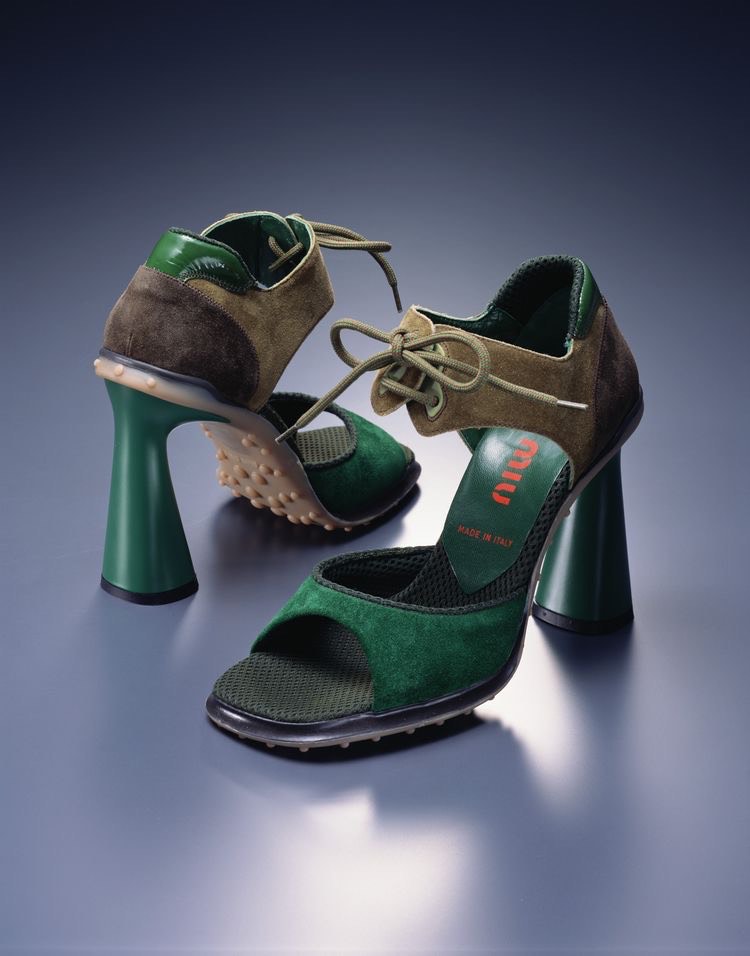
Miu Miu 99’ is singularly emblematic of the late 90s and yet at once bares a striking timelessness. Cavalli and Gaultier find their work replicated by Shein and AliExpress, but the influence of Miu Miu 99′ is seen through the gloominess, sophistication and heavy drapery of the likes of Rick Owens, The Row, Acne Studios, and Helmut Lang.
The collection is standalone in the glossary of fashion, its simple, edgy and intricate styles pulled from a variety of trends and motifs give it a certain air of timeless sophistication. From the buckled utilitarian motifs used throughout the collection’s dresses, to cowhide fur used for minimalistic aprons, and moody earth tones like forest green, khaki, and brown— Miu Miu 99′ moved the needle.
 JoliAmour DuBose-Morris is a multimedia journalist and screenwriter based in New York and California.
JoliAmour DuBose-Morris is a multimedia journalist and screenwriter based in New York and California.
JoliAmour is currently in her final year of her B.A. at The University of San Francisco where she’s focusing on film and journalism.

